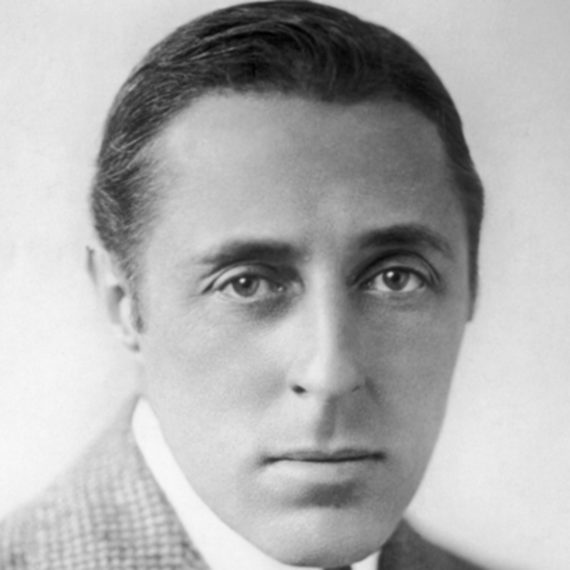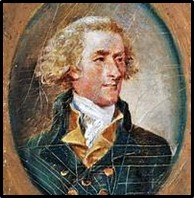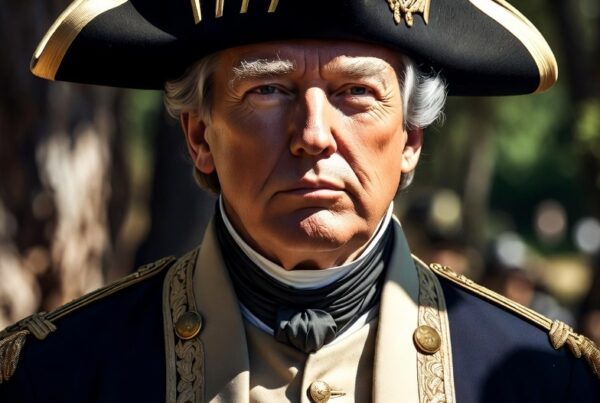
None knew it then, but in 1915, Southern agrarian influence on the movies was at its height. The film trade had just left Fort Lee, New Jersey, only to land in the equally piously named Mount Lee, California. Of course, the latter’s new name was Hollywood, due to its Kansas prohibitionist developers, but it was also the same name as the Richmond cemetery sanctified by so many Confederate figures.
More important was that the industry leader was director David Wark Griffith, son of a Kentucky Confederate colonel and the man who dominated the industry almost from the moment he started making shorts for Biograph. All that was really pre-history. On February 8, he premiered The Birth of a Nation at Clune’s Auditorium. This Southern view of the Confederacy and Reconstruction is the most important movie in history. It became the biggest hit ever and provided the cash for innumerable film fortunes. Politics aside, no film historian disagrees that it’s the most important film artistically in that it served as the textbook for generations of filmmakers.
Griffith reluctantly entered movies as an actor when his stage career stalled. Soon, he was directing one or two shorts a week for Biograph, Thomas Edison’s studio. Other companies may have had a plusher, more streamlined look, but Griffith’s work had
By the time he did The Birth, he had shot eleven Confederacy theme shorts, plus one anti-Klan picture, The Rose of Kentucky. In 1914, he was set up in the old Kinemacolor studio around the intersection of Hollywood and Sunset Boulevards. A Confederate project was his dream, but the immediate impetus seems to have been an associate who had worked with Kinemacolor on an ill-fated earlier attempt to bring Thomas Dixon’s play The Clansman to the screen in color. (The idea had been to follow a traveling company around and shoot it between performances.) Griffith knew the play since his first wife had done it.
He bought it and the source novel from Dixon, plus another book The Leopard’s Spots, and added stories he had heard from his father.
His tale has the Stoneman brothers and their sister Elsie (Lillian Gish) planning to visit their old friends the Cameron boys in South Carolina as the war breaks out. Ben, the Little Colonel (Henry B. Walthall), falls in love with Elsie from just her photo. At Petersburg, a wounded Ben leads a final, desperate charge to a cannon and rams a Confederate flag staff in it. The Yankees recognize his bravery and let him through. He recovers in a prison hospital where he finally meets Elsie. The first half ends with the two remaining young Stonemans witnesses of Lincoln’s assassination.
After the war, Elsie and her brother arrive in Piedmont, the Cameron hometown, where their father Austin, patterned on Thaddeus Stevens, takes personal charge of Reconstruction in the state. Despite all the atrocities, Elsie and Ben are still in love, as are her brother with his sister. Stoneman promotes Silas Lynch as the leader of his new black power base.
Ben conceives of the Ku Klux Klan to counter Reconstruction just before his younger sister (Mae Marsh) leaps to her death while escaping a black rapist. The rapist is tried and executed by the Klan and deposited on Lynch’s doorstep. The Yankees respond with their black troops. Anarchy breaks out. The Camerons are trapped in the cabin of Union veterans by the troops. The Klan gathers and rescues them in Griffith’s most famous race to the rescue. (Future director John Ford played a Klansman. He fell off his horse and was knocked out. He woke up to see Griffith hovering over him. Although not a true protege as so many others were, he was the director most faithful to Griffith’s spirit for over fifty years, starting with his first feature Straight Shooting. It ends with a rescue that’s almost a shot for shot reworking of this one. Taking a potentially killer fall and waking up to see Griffith standing in for God must have been a religious experience.)
The couples are married and imagine a future in which Mars, the god of war, is supplanted by Jesus in allegorical shots.
Griffith was genuinely amazed at the controversy his view of Reconstruction caused. He made some minor cuts, but they don’t seem to have made any real difference.
Real controversy about a movie was new back then, but this publicity for The Birth was good for only so much initial push. But as a dramatic entity, the film really delivered. Major roadshow reissues continued well into the twenties. Griffith practically remade it as a World War I movie, Hearts of the World.
The controversy has never ended. It was one of the NAACP’s first causes. Even today when it runs, newspapers often receive form letters that have been used for decades.
The recent British-PBS documentary on Griffith shows this. The British filmmakers finished it with no complaints from their British backers. But then the PBS partners demanded that two black voices be gratuitously inserted.
In 1965, I had some experience with this when I loaned the last reel of my 8mm print to a student group in a deadly dull high school sociology class, sad to say, to use as an example of KKK recruitment tools. The class was informed of its cinematic importance, what I was interested in. Suffice it to say, the class loved it. Initially, I’m afraid, they just saw it as an old, jerky movie, but they were into it cinematically by the end. The teacher hated what I’d done. It wasn’t even my group! She knew its importance beforehand and couldn’t fault it cinematically, but as a school resource, fortunately one she couldn’t control, she told me she would have preferred a member of the Communist Party as a speaker. This was when the legislature in Raleigh was debating the legality of that on state college campuses.
A few years later I showed it to a local, so called film society, dominated by the usual little theater types. I was expecting trouble, but by their unspoken manner I saw they had a grudging respect for it.
This print’s finest moment came in 1974, when it was shown in Winston-Salem at a conservative gathering, and the titles were read by the immortal Mel Bradford. Sad to say, I wasn’t there.
Griffith started to fight back against his critics with an attack on liberal reformers called The Mother and the Law. But as money came in from The Birth, he added the Crucifixion, the Fall of Babylon, and St. Bartholmew’s Day. He cut between these four segments, ending in one incredible race to the rescue that stretched over 4200 years. He called it Intolerance (1916), the most audacious movie in history. It also lost most of his money from The Birth.
While not as spectacular as The Birth or the Babylon story, the modern story is the first and best depiction of establishment liberals ever put on the screen.
All of this had to come from some place, and with Griffith it was his rural Kentucky roots.
He played the part of the impoverished Southern aristocrat so well that practically everyone he knew after he left Kentucky bought it. Only a Macaulay or a Gibbon to the manner born could deal with history so dramatically as he did. But he came from poor yeoman stock. It was a front to hide his self consciousness about hardly having any formal education. It worked for him as he became the screen’s foremost figure, someone even a schoolmarm could respect.
A look at his work shows that the truth about him was almost always just beneath the surface.
The specifics behind the loss of the Griffith farm aren’t known. Corner in Wheat (1909), an early Biograph, is surely informed by them. A farming community barely hangs on as distant speculator gains control of the wheat market. Bread prices go too high for the poor to pay. The financier dies in a grain elevator accident. At the end, just one farmer still tills the field.
What makes it so amazingly fresh today is that it isn’t a James Agee brochure for poverty. Griffith isn’t condescending toward his plain folk since he was one.
A similar tone, including repeats of some scenes, is in his last masterpiece Isn’t Life Wonderful (1924) about postwar inflation in Germany. It also reflects the Reconstruction South.
More obvious than that personal experience is that very early on he was able to tell several separate, but thematically related stories at the same time as he would do in Intolerance.
Griffith made innumerable Biographs that showed his Kentucky background. Many critics consider them his best works since extraneous demands, like audience expectations, didn’t become critical.
He kept returning to his roots, especially as he recovered from Intolerance. These movies mostly starred Lillian Gish and Bobby Harron as a very autobiographical figure who wanted to go to the city and become a successful writer so he could return in triumph to his hometown.
True Heart Susie (1919) is generally considered the best. Lillian Gish, in a simple but unforgettable performance, finances the education of her boyfriend, Harron, by selling part of her farm. He is unappreciative upon his return and, though a preacher, marries a well-meaning flapper who fortunately dies.
What may have given the film added resonance during shooting, particularly with Miss Gish, is that something like this was going on between her and Griffith in real life.
Although not a comic role, Miss Gish’s performance was the pattern Frank Capra used years later in reformulating Harry Langdon’s image, starting with The Strong Man. In fact, Capra copied Griffith’s approach to small town life. Griffith himself preferred Capra’s chief rival Preston Sturges.
These films were close to Griffith’s heart, but he realized he had to change with the times. With The Greatest Gift (1919), he shoehorned in spiritualism to appeal to jaded audiences just beginning to expect Jazz Babies.
What it amounted to was a warm up to Griffith’s next movie, his most famous rural movie, and his biggest hit after The Birth, Way Down East. It is based on a creaky but beloved barnstormer set in Maine.
Anna (Miss Gish) has an illegitimate baby by a cad. The baby dies. She finds work with a respectable family. When her secret is revealed, she is forced out into the most famous blizzard in screen history. After being rescued from a truly gasp-inspiring ice flow, everyone, including the cad, begs forgiveness.
Even though Griffith added this ice flow, he couldn’t do much to the play’s characters since it was so famous. The comedy in this melodrama is much broader than is usual with Griffith’s well-observed rural tales.
He took the same general ideas and reworked them in The White Rose (1923), his last major rural work. It’s not an epic like East. That’s even announced in the opening titles. It was shot in Louisiana and only boasts a big storm in which The Birth’s Little Sister and the baby survive.
For many, Way Down East may be the easiest introduction to D. W. Griffith, or maybe even to the silent screen. But the earlier rural films may hold up better, especially Susie. They’re more personal and natural. Too much was at stake with East not to fill it up with production values. These easier, simpler films stand in relation to East as Ford’s Wagonmaster or My Darling Clementine do to The Searchers. The latter is more impressive at first while the former fits like gloves.
The loss of Miss Gish as an anchor, alcoholism, and changing times led Griffith to a mixed bag of movies through the rest of the twenties. His Southern roots did lead to an unlikely sound debut, Abraham Lincoln (1930).
Maybe because Griffith actually played Lincoln once, he admired him and thought he would have prevented Reconstruction. In any event, studio politics doomed it from the start.
The final product strikes me as having more in common with Way-Down East than anything else. He seems to have aimed at obvious audience expectations or the basic Lincoln myth, more than he did with the so-called Southern myth in The Birth.
The standard anecdotes are occasionally broken up by short action scenes, but no real battles. They show the old pizzazz and make you think it will come alive, but since there never seems to be anything at stake in these scenes, it doesn’t. Ford’s theater is lame, way below The Birth’s assassination.
After The Struggle (1931), the greatest figure in screen history and the most effective Southern agrarian artist would pass from the scene. For whatever reason, the South doesn’t produce theatrical talent, so there has never been a Southern successor to Griffith on the screen or any real Southern presence since then.






